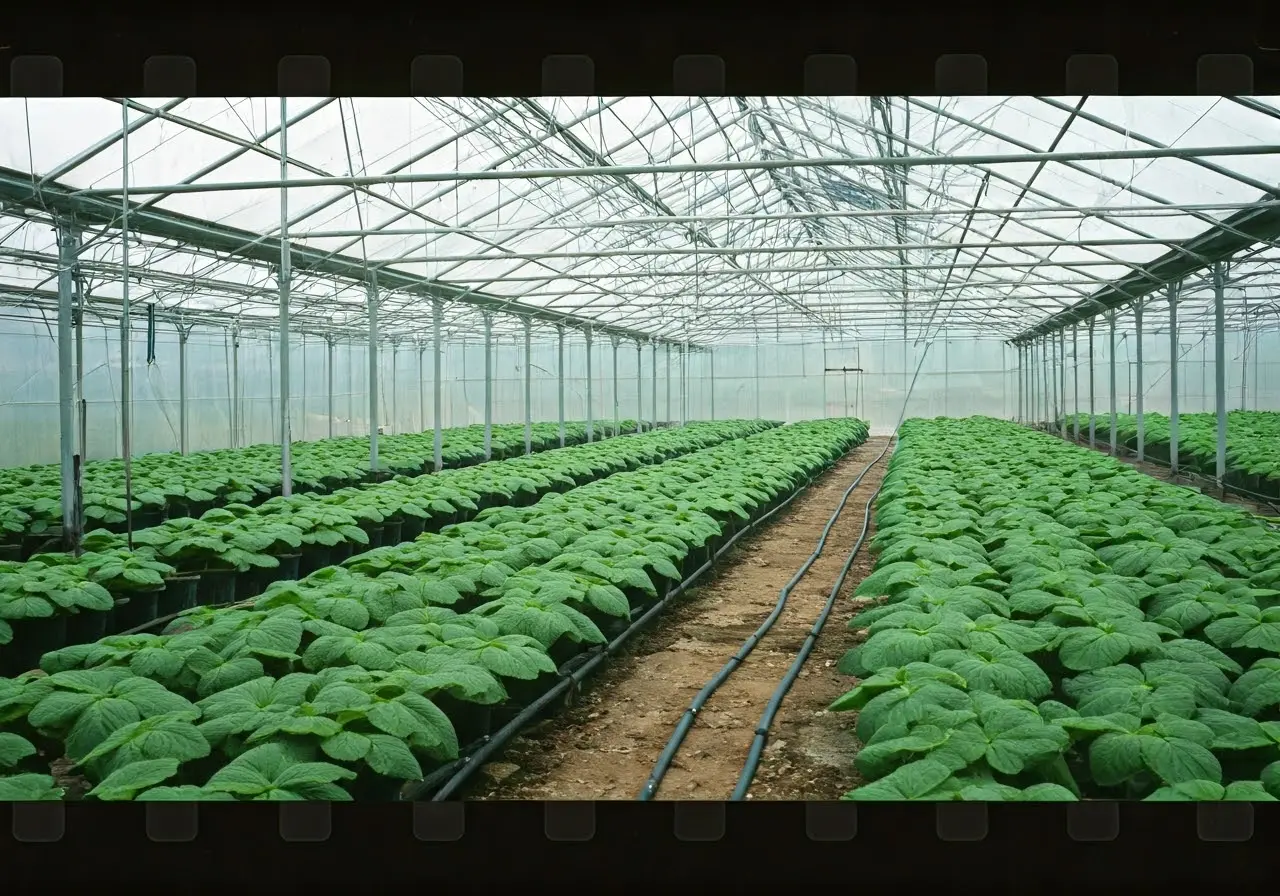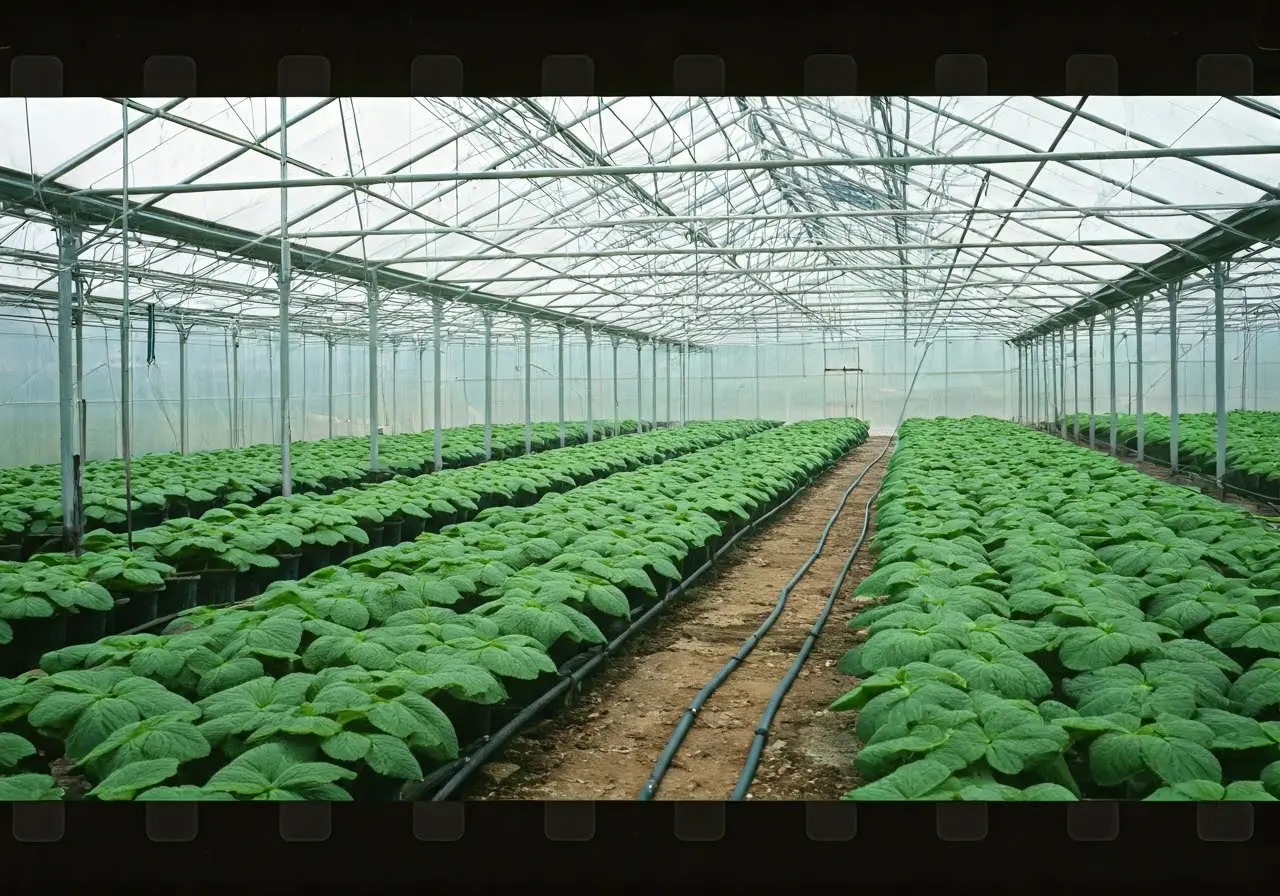Designing an effective irrigation system for your greenhouse is key to ensuring healthy and flourishing plants. Whether you’re a seasoned gardener or a beginner, understanding these essential factors can enhance your greenhouse’s productivity. Let’s dive into the crucial elements to consider.
1. Understanding Plant Water Needs
Different plants have varying water requirements. Knowing the specific needs of your greenhouse plants is the first step in designing an effective irrigation system. For instance, some tropical plants require more humidity, whereas succulents thrive with less frequent watering. Tailoring your irrigation system to these needs ensures that each plant gets the right amount of water, promoting healthier growth. Moreover, observing your plants’ behavior over time can provide valuable insights, allowing for adjustments to your irrigation practices as necessary.
During the process of understanding these needs, it might be helpful to keep a plant journal to note any changes or observations. Trends like drooping leaves or discolored foliage can indicate over- or under-watering, which you can correct with timely interventions. Also, consider the lifecycle of plants; seedlings might require different watering regimes than mature plants, making adaptability a must when planning your schedule.
2. Choosing the Right Irrigation System
Selecting an irrigation system that aligns with your greenhouse’s layout and your plants’ needs is crucial. Consider options like drip irrigation or overhead sprinklers based on your setup. Drip irrigation, for example, provides water directly to the base of the plants, which minimizes water loss through evaporation and limits the spread of diseases that thrive in humid environments.
On the other hand, overhead sprinklers can be more suitable for larger greenhouses with uniform plant types. This system mimics natural rainfall, which can be beneficial for certain crops. When deciding, factor in the efficiency, installation cost, and alignment with your long-term growth goals. Taking the time to research and compare these systems can massively impact your greenhouse’s productivity.
3. Evaluating Water Quality
Good quality water is essential for plant health. Test your water source for pH levels and contaminants to ensure it’s suitable for irrigation. The ideal pH level for most plants is between 6 and 7.5, but certain species might have more specific needs. Adjusting the pH can drive nutrient availability and absorption, directly affecting your plant’s vigor.
Contamination in water can adversely impact plant health and lead to the introduction of harmful pathogens. Regularly testing your water for impurities such as chlorine, fluoride, or heavy metals is important. If necessary, consider installing a filtration system to remove these impurities and provide your plants with the highest quality water, ensuring robust growth and bountiful yields.
4. Considering Climate and Seasonality
Climate impacts water evaporation rates and plant growth. Adapt your irrigation schedule according to seasonal changes and temperature variations. In hotter months, you might need to water more frequently to compensate for the increased evaporation rates. Conversely, during cooler seasons, overwatering can be a common mistake, risking root rot and fungal diseases.
Humidity levels can also influence your irrigation needs. Higher humidity generally means less water loss, while a drier environment might require more frequent watering. Monitoring local weather forecasts and using basic climate control tools in your greenhouse, like fans or vents, can better regulate these conditions, allowing for a more consistent watering routine.
5. Designing for Water Efficiency
Efficient irrigation systems conserve water. Implement timers and moisture sensors to optimize water usage, reducing waste and ensuring each plant receives adequate hydration. Timers can automate the watering process, reducing the chances of human error, while moisture sensors provide feedback on the soil’s water content, allowing precise adjustments to be made.
By integrating these technologies, greenhouse owners can achieve significant water savings. This not only contributes to environmental sustainability but also reduces operational costs. Leveraging data from these tools helps maintain ideal conditions for plant growth, leading to healthier plants and more abundant harvests.
6. Integrating Nutrient Delivery
Combine irrigation with nutrient delivery to enhance plant growth. Learn how to add fertilizers through your irrigation system for optimal plant health. This method, known as fertigation, allows for synchronized feeding spread evenly across your greenhouse, ensuring each plant receives the necessary nutrients with their water supply.
Fertigation has the added benefit of reducing fertilizer runoff and environmental impact by precisely delivering nutrients to where they are most needed. This technique can be tailored to the nutritional needs of your plants through regular testing and adjustments, which is not only sustainable but also results in stronger, more resilient plants.
7. Planning for System Maintenance
Regular maintenance ensures your irrigation system runs smoothly. Routine checks prevent clogs and leaks, guaranteeing consistent water supply. Such checks involve inspecting pipes, cleaning filters, and ensuring emitters are unobstructed to prevent any interruptions in water flow.
Maintenance can also include re-evaluating the system’s performance over time to adjust for growth or changes in the greenhouse environment. By keeping a maintenance log, you can track these inspections, making it easier to predict and prevent potential issues, ultimately extending the lifespan of your irrigation system and optimizing plant health.
8. Understanding Pressure Regulation
Proper water pressure is vital for efficient irrigation. Install pressure regulators to maintain a stable water flow, preventing damage to your irrigation components. Without regulation, too high pressure can cause leaks or burst pipes, while too low pressure can lead to inadequate watering.
By maintaining the correct pressure, water is evenly distributed to all plants, ensuring no areas are under- or overwatered. Understanding the specific pressure requirements of your system can prevent common problems and enhance nutrient delivery when combined with fertigation strategies.
9. Customizing for Plant Layout
Tailor your irrigation design to accommodate your plant arrangement. Ensure uniform water distribution to prevent under or over-watering of certain areas. Consider the spacing, size, and water demands of different species when mapping out your irrigation design.
This customization might involve adjusting the type or density of emitters in different greenhouse zones or employing varying irrigation methods where needed. By aligning your irrigation system with plant placement, you can optimize growing conditions and facilitate better overall plant health and productivity.
10. Emphasizing Scalability and Flexibility
Design with future expansion in mind. A scalable system allows for easy modifications as your greenhouse needs evolve. Whether you plan to introduce new plant varieties or expand the physical size of your greenhouse, having a flexible irrigation system will accommodate these changes without needing a complete overhaul.
Include provisions for additional lines or connections in your design, anticipating future growth. This foresight saves time and resources, providing peace of mind as your greenhouse operation expands. Flexibility in design ensures that your irrigation system remains effective and efficient as trends and technology in greenhouse management advance.




